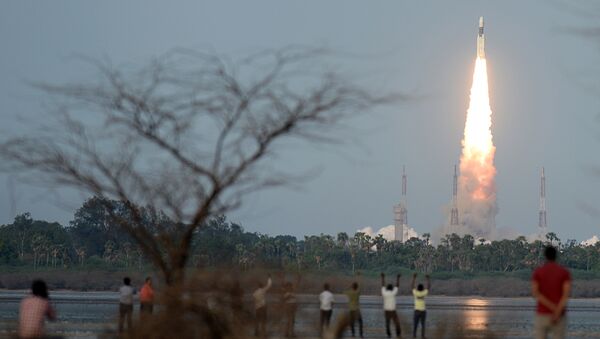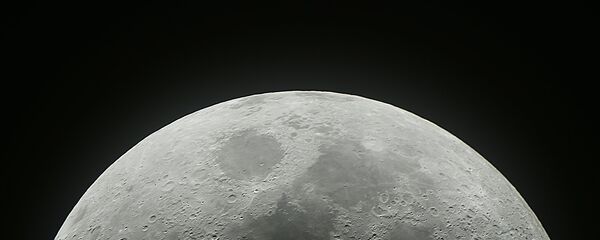New Delhi (Sputnik): Indian Space Research Organisation (ISRO) has successfully launched its 3.4-ton communication satellite from its GSLV MkIII-D2, the second developmental flight of GSLV MkIII on Wednesday. GSAT-29, a high throughput communication satellite, is intended to meet the communication needs of people in the remote areas of the country's North East and Jammu and Kashmir.
READ MORE: Russia to Help India in its First Manned Space Mission
Terming the launch as a significant milestone, ISRO chief K Sivan informed that the injection of the satellite into the Geo Transfer Orbit (GTO) was 'precise.'
Andhra Pradesh: Indian Space Research Organisation (ISRO) launches GSLV-MK-III D2 carrying GSAT-29 satellite from Satish Dhawan Space Centre in Sriharikota pic.twitter.com/9QPIzshi7R
— ANI (@ANI) November 14, 2018
"I am extremely happy to declare that our heaviest launcher in its second mission has lifted the heaviest satellite, GSAT 29 from Indian soil, and after a majestic travel of 16 minutes, it precisely injected it into the intended Geo Transfer Orbit," the ISRO chief said.
My heartiest congratulations to our scientists on the successful launch of GSLV MK III-D2 carrying GSAT-29 satellite. The double success sets a new record of putting the heaviest satellite in orbit by an Indian launch vehicle. @isro
— Narendra Modi (@narendramodi) November 14, 2018
READ MORE: India Aims to Establish Firmest Conclusion of Water, Minerals on Moon's Surface
GSLV-Mk III is a three-stage vehicle with two solid motor strap-ons, a liquid propellant core stage and a cryogenic stage capable of launching 4-ton class satellites to the Geosynchronous Transfer orbit (GTO).
ISRO chief added that the launch vehicle's first operational mission is going to be "none other than Chandrayaan" in January 2019.
"This fantastic vehicle is going to carry humans to space in three years from now, "he said.




